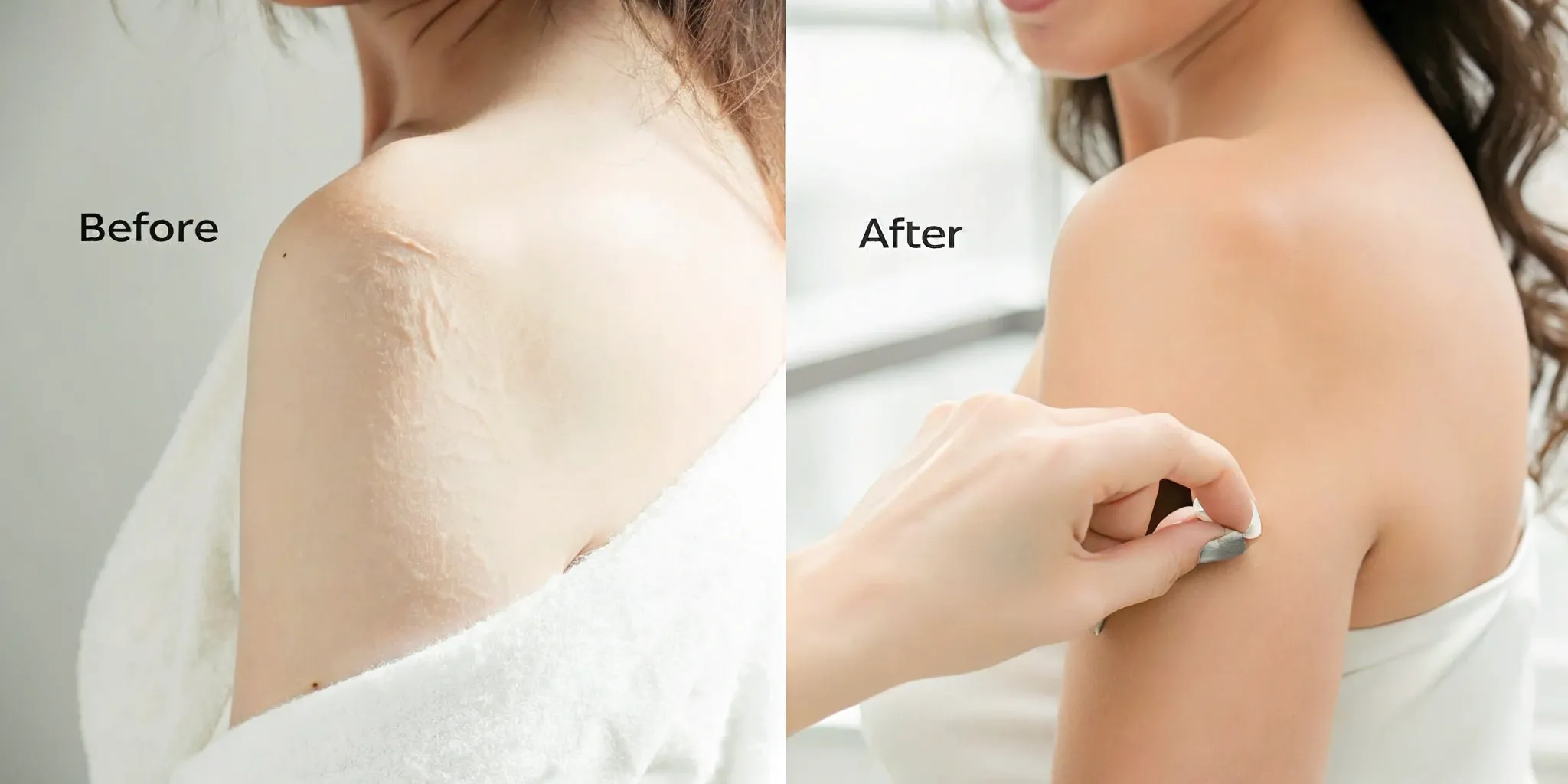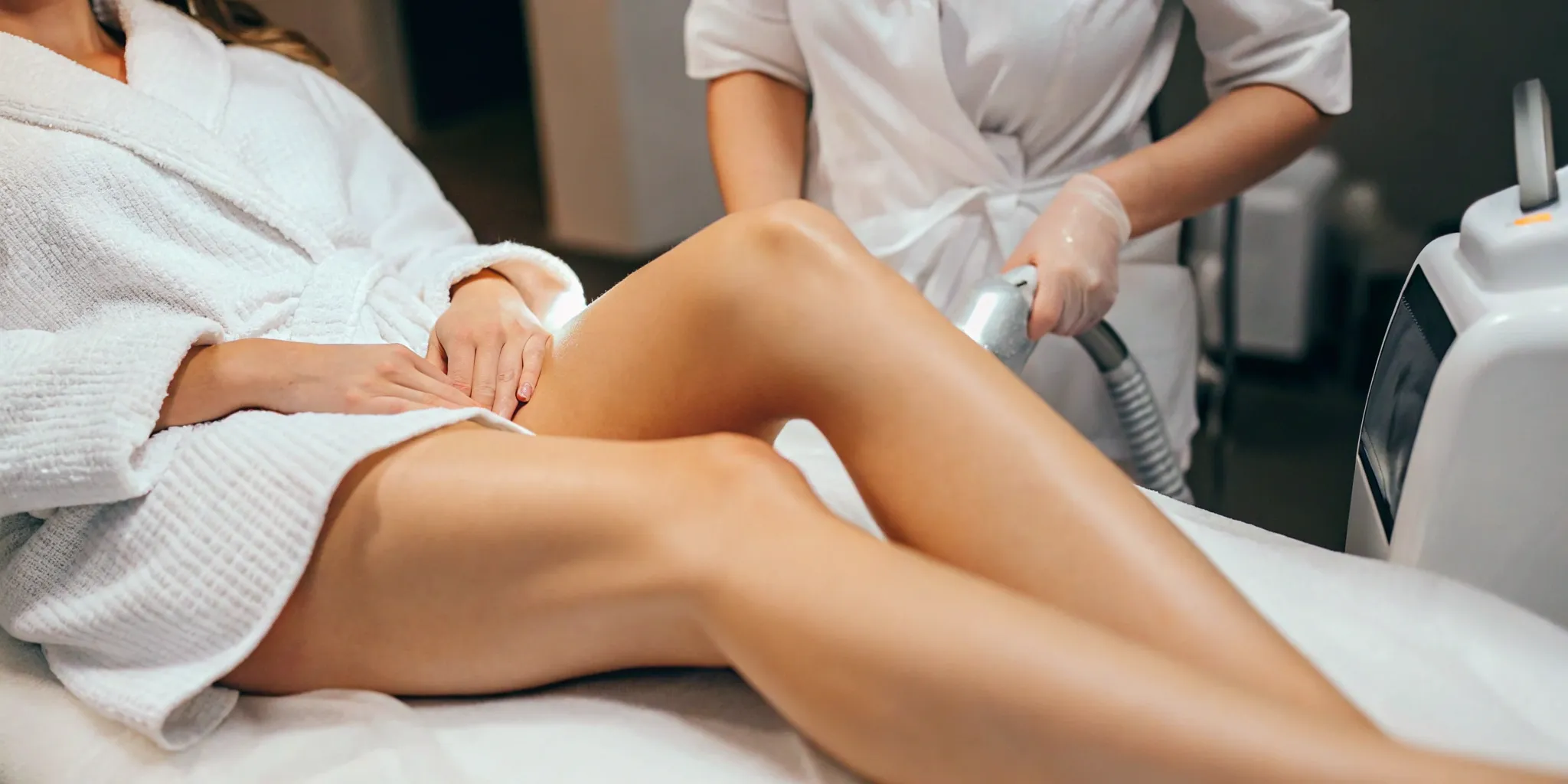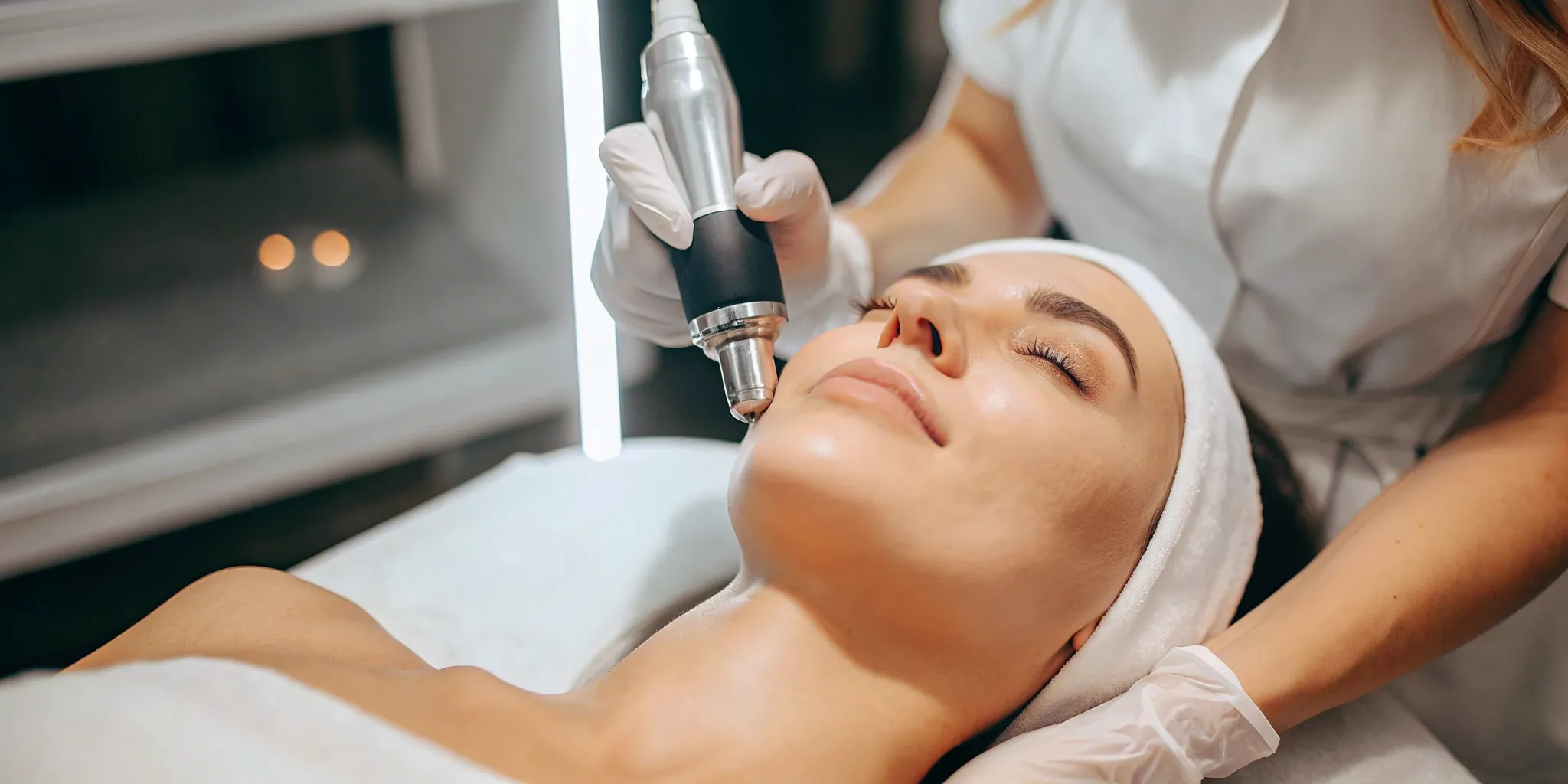Tattoos tell stories, but sometimes, we want to change the narrative. Whether it’s a youthful impulse, a faded design, or simply a change of heart, tattoo regret is a common experience. Fortunately, advancements in tattoo removal technology offer a variety of solutions for fading or completely removing unwanted ink. This guide will walk you through the different methods available, from professional laser treatments to at-home tattoo remover options. We’ll discuss the science behind each method, the factors that influence success, and the potential risks involved. We’ll also explore the costs associated with each option, helping you make an informed decision that aligns with your budget and your desired outcome. At Ultimate Image MedSpa, we’re committed to providing you with the knowledge and support you need to embark on your tattoo removal journey with confidence.
Key Takeaways
- Professional laser tattoo removal offers the best results. It’s the most effective way to remove unwanted ink, especially when performed by experienced technicians using advanced technology.
- Cost and effectiveness vary based on several factors. Tattoo size, ink colors, and skin type all play a role. A consultation with a qualified professional is crucial for determining the best approach and understanding potential outcomes.
- Aftercare is just as important as the procedure itself. Following post-treatment instructions, including sun protection and proper wound care, is essential for minimizing side effects and achieving optimal results.
What is Tattoo Removal?
Tattoo removal is a procedure that eliminates unwanted tattoos. While getting a tattoo is a pretty straightforward process, removing one is more complex and often more expensive. Several methods exist, including laser surgery, surgical excision, and dermabrasion. Laser tattoo removal is the most common method because it’s generally considered the most effective and precise. It uses pulses of light energy to break down the tattoo ink into tiny particles that your body’s immune system then removes. This targeted approach minimizes damage to the surrounding skin. It’s important to understand that tattoo removal isn’t instant. Multiple sessions are usually needed to see results, and the number of treatments varies depending on the tattoo’s size, colors, and your skin type.
Laser Tattoo Removal: The Gold Standard
Laser tattoo removal is the most effective way to remove or lighten unwanted tattoos. It’s precise, generally safe, and minimizes scarring. If you’re serious about getting rid of a tattoo, understanding how laser removal works is a good first step.
How Does Laser Removal Work?
Lasers emit short pulses of light energy that target tattoo ink particles beneath your skin. These pulses break the ink into tiny fragments that your body’s immune system can then naturally process and eliminate. This process, known as selective photothermolysis, allows the laser to target the tattoo pigment without harming the surrounding tissue. The FDA recognizes laser tattoo removal as the most common method used by healthcare professionals. It’s a significant improvement over older, more invasive methods that often resulted in noticeable scarring.
Factors Affecting Laser Treatment Success
Several factors influence the success of your laser tattoo removal. The type of ink plays a significant role—some inks respond better to laser treatment than others. The age and size of the tattoo also matter. Older, smaller tattoos are often easier to remove. According to the Mayo Clinic, the number of sessions needed for complete removal depends on these factors, along with the ink’s depth and color. Choosing the right type of laser is also crucial. Different lasers target different ink colors, and an experienced technician will tailor the treatment to your specific tattoo. Published research32349-5/pdf) emphasizes the importance of selecting the appropriate laser for both efficacy and minimizing potential side effects.
Non-Laser Tattoo Removal Options
If you’re exploring tattoo removal, you’ll likely come across a range of options besides laser treatments. Let’s take a look at some of these alternatives, including over-the-counter products and other professional methods.
Over-the-Counter Products and Their Claims
A quick search online will reveal numerous tattoo removal creams promising to fade or eliminate unwanted ink. These topical products often claim to break down the ink particles and lift them to the skin’s surface. However, experts often express skepticism about the effectiveness of tattoo removal creams. The reality is that these creams often lack the power to penetrate deep enough into the dermis where the tattoo ink actually sits.
You might encounter products like the Tat B Gone System, marketed in various sizes and touted for its subtle scent. Or, you might see Tattoo Destroyer, which promotes its all-natural ingredients and claims it won’t cause burning or scabbing. While these features might sound appealing, surface-level fading doesn’t equate to true tattoo removal.
Surgical and Other Professional Methods
Beyond creams, several professional non-laser tattoo removal methods exist, each with its own set of pros and cons. These include surgical excision and dermabrasion.
Surgical excision involves physically cutting out the tattooed skin and stitching the remaining skin together. As the Mayo Clinic explains, this method is generally best suited for small tattoos because of the resulting scar.
Another option is dermabrasion, a procedure where the skin is essentially sanded down to remove the tattoo. The Mayo Clinic notes that dermabrasion is less common than laser treatments due to its less predictable results and lower overall effectiveness. It’s important to weigh these factors carefully when considering your options. While these methods offer alternatives to laser removal, they often come with drawbacks like scarring or less effective results.
Comparing Tattoo Removal Methods
Effectiveness: Laser vs. Creams vs. Other Options
Let’s be upfront: laser tattoo removal is the most effective way to remove a tattoo. The FDA recognizes laser removal as the standard method healthcare professionals use. Lasers use light energy to break down tattoo ink into tiny particles your body can then absorb. Professional laser treatments are generally the most reliable approach for significant fading or complete removal. For example, the Phantom™ laser is known for its effectiveness in breaking down ink particles for natural removal.
You’ll likely see claims about tattoo removal creams and other at-home methods. The truth? These methods rarely work. Topical creams can’t reach the ink embedded in your dermis—the second layer of your skin. So, while these products might seem like a quick fix, they’re unlikely to deliver the results you want.
Safety Considerations for Each Method
When it comes to tattoo removal, safety is paramount. Professional laser tattoo removal, when performed by trained technicians in a medical setting, comes with minimal risk. At Ultimate Image MedSpa, we prioritize your safety and use advanced techniques to minimize potential side effects. Learn more about our approach to laser tattoo removal.
At-home methods, however, are a different story. DIY lasers, creams, and abrasive techniques can cause significant damage. At-home laser devices lack the precision of professional equipment, often leading to burns and scarring—without even fading the tattoo. Some DIY methods can even increase your risk of infection, as explained by the Cleveland Clinic. Tattoo removal creams, while generally less risky than at-home lasers, can still cause skin irritation. Remember, your skin’s health is important, so prioritize safe and effective methods.
The Real Cost of Tattoo Removal
Let’s be honest, getting a tattoo removed is more involved (and pricey) than getting one. But how much more expensive? Well, that depends. Several factors influence the final cost, and it’s important to understand them all before making a decision.
Professional Treatment Pricing
Professional tattoo removal, specifically laser tattoo removal, is the most effective way to eliminate unwanted ink. The price of laser tattoo removal typically ranges from $200 to $500 per treatment session. Most tattoos require multiple sessions—anywhere from six to eight—to see real results. This means you could be looking at a total investment between $1,200 and $4,000, with the average cost around $3,500. Factors like the tattoo’s size, color, and location on your body can all affect the number of sessions needed, and therefore the overall cost. For example, larger tattoos will naturally require more sessions, while certain ink colors are more difficult to remove than others. It’s always best to consult with a professional for a personalized assessment and quote. You can find out more about laser tattoo removal and pricing by visiting our laser tattoo removal page.
At-Home Product Costs
You’ll likely come across at-home tattoo removal methods like creams or DIY laser devices, often at significantly lower price points than professional treatments. While the initial cost may seem appealing, it’s crucial to understand the potential risks. Over-the-counter tattoo removal creams simply can’t penetrate deep enough into the skin to reach the ink. The ink is embedded in the dermis, and topical creams just can’t get there, making them largely ineffective. Similarly, at-home laser devices pose serious safety risks. These devices may not have the same safety features as professional equipment, increasing the risk of burns, scarring, or other complications. For more information on the risks of at-home tattoo removal, check out our blog post on the topic.
Long-Term Financial Considerations
While professional tattoo removal might seem like a larger upfront investment, it’s often the most cost-effective solution in the long run. Laser treatments, performed by trained professionals, are generally considered the most reliable approach, offering the best chance of complete removal with minimal risk of scarring. Consider the potential costs associated with ineffective at-home methods. You might end up spending money on products that don’t work, and then still need professional treatment later, ultimately costing you more time and money. Additionally, correcting any damage caused by at-home methods can add further expense. Investing in professional tattoo removal from the start can save you from these potential extra costs and provide peace of mind. If you’re ready to discuss your tattoo removal options, contact us to schedule a consultation.
Risks and Side Effects of Tattoo Removal
Like any medical procedure, tattoo removal has potential risks and side effects. Understanding these beforehand helps you make informed decisions and prepare for what’s ahead. While serious complications are rare, especially with professional treatments, it’s still important to know what to expect.
Common and Rare Complications
Some common side effects are temporary and resolve on their own. These can include redness, swelling, itching, and tenderness around the treated area, much like the initial tattoo experience. Changes in skin pigment—either lightening (hypopigmentation) or darkening (hyperpigmentation)—can also happen, though these often fade with time. Scarring is a possibility with any removal method. Less common but more serious risks include infection and allergic reactions, either to the ink or numbing agents.
Blistering or scabbing at the treatment site is also possible. While usually minor, these can increase the risk of infection if not cared for properly. Following your aftercare instructions is crucial to minimize this. In very rare cases, more significant scarring or changes in skin texture can occur.
Minimizing Risks During Removal
Choosing a qualified and experienced practitioner is the most important step in minimizing risks. Look for a licensed dermatologist or medical professional specializing in tattoo removal who uses FDA-cleared equipment and follows established safety protocols. Professional treatments, especially laser removal, are generally safer and more effective than DIY methods. At-home methods, like DIY lasers or chemical peels, carry significant risks, including burns, infections, and permanent scarring. Protecting your skin and eyes is critical if you’re considering at-home laser tattoo removal.
Before starting any tattoo removal process, discuss your medical history and any allergies with your practitioner. This helps them determine the best approach and minimize potential complications. Pain management is another important factor. A skilled practitioner can use various techniques to make the procedure more comfortable. Finally, follow all aftercare instructions carefully to promote healing and reduce the risk of infection or other complications. This typically involves keeping the area clean, protected from the sun, and avoiding certain activities that could irritate the skin.
Preparing for Tattoo Removal
Consultation and Pre-Treatment Care
Before starting tattoo removal, schedule a consultation with a qualified dermatologist or licensed professional. This crucial step helps determine the best treatment plan for your unique tattoo and skin type. Experts will assess your tattoo’s size, color, and placement—all factors that can influence the removal process. During your consultation, discuss any concerns and ensure you clearly understand what to expect and how to prepare. At Ultimate Image MedSpa, we’ll explain how your tattoo’s color palette might affect the removal process.
Setting Realistic Expectations
Tattoo removal is a process, so it’s important to have realistic expectations about the outcome. Complete removal isn’t always possible, and some discoloration or scarring might remain. Multiple sessions are typically needed for optimal results. Understand that tattoo removal is a medical procedure with potential risks and requires professional expertise. It often involves local anesthesia and is done as an outpatient procedure, so be prepared for a medical environment. Going in with a realistic mindset and a clear understanding of the process will make for a smoother experience. Learn more about tattoo removal from the Mayo Clinic.
Aftercare and Recovery Essentials
So, you’ve started your tattoo removal journey—that’s a big step! Now, let’s talk about what you can expect and how to care for your skin post-treatment to ensure the best possible results. This stage is just as important as the procedure itself.
Post-Treatment Care Tips
After your laser tattoo removal session at Ultimate Image MedSpa, you might experience some minor redness and discomfort, similar to a mild sunburn. This is perfectly normal and typically subsides within 24-48 hours. We’ll provide you with detailed aftercare instructions, but here are a few key things to keep in mind:
- Keep it clean: Gently cleanse the treated area with a mild soap and water a few times a day. Avoid harsh scrubbing or perfumed products.
- Moisturize: Applying a fragrance-free moisturizer can help soothe the skin and promote healing.
- Antibiotic ointment: Your technician may recommend applying an antibiotic ointment like Aquaphor or Vaseline to the area for about a week to further aid healing and prevent infection. This creates a protective barrier and helps keep the skin hydrated.
- Hands off: Resist the urge to pick or scratch at any scabs that may form. Picking can interfere with the healing process and potentially lead to scarring or infection.
- Sun protection: Protecting the treated area from sun exposure is crucial. Use a broad-spectrum sunscreen with an SPF of 30 or higher, even on cloudy days, and consider covering the area with clothing. Sun exposure can increase the risk of hyperpigmentation (darkening of the skin) or hypopigmentation (lightening of the skin).
Managing Discomfort and Optimizing Results
While everyone’s pain tolerance is different, many people find laser tattoo removal less painful than getting the tattoo itself. The sensation is often described as similar to the snap of a rubber band or a mild sunburn. Here are some tips for managing any discomfort and ensuring the best outcome:
- Over-the-counter pain relief: Over-the-counter pain relievers, such as ibuprofen or acetaminophen, can help manage any discomfort.
- Cooling measures: Applying a cool compress or ice pack to the treated area can help reduce swelling and soothe the skin.
- Numbing cream: Talk to your provider at Ultimate Image MedSpa about using a numbing cream prior to your treatment. This can significantly minimize discomfort during the procedure.
- Follow instructions: Adhering to the pre- and post-treatment instructions provided by your technician is essential for minimizing risks and optimizing your results. These instructions are tailored to your specific needs and skin type. Don’t hesitate to reach out to us with any questions or concerns. We’re here to support you throughout the entire process.
Choosing the Right Tattoo Removal Solution
Deciding to remove a tattoo is a big step, and choosing the right removal method is crucial for both your safety and your results. This section will guide you through evaluating professional services versus at-home options, and highlight key questions to ask before committing to any method.
Evaluating Professional Services vs. At-Home Options
Professional tattoo removal, especially laser treatments like those offered at Ultimate Image MedSpa using the advanced Phantom™ laser, is widely considered the safest and most effective approach. Laser technology works by breaking down ink particles into smaller fragments that your body can then naturally eliminate.
While DIY methods like at-home laser devices, creams, and salabrasion may seem appealing because of their lower upfront cost, they come with significant risks. At-home tattoo removal can lead to scarring, infection, and incomplete removal, often requiring professional correction later. This can make DIY methods more expensive in the long run, as highlighted by experts. Professional tattoo removal may have a higher initial investment, but it typically offers better results and fewer complications.
Questions to Ask Before Committing
Before starting any tattoo removal process, ask the right questions and understand what to expect. Consider these points:
- What are the potential side effects? Understanding both short-term side effects and long-term considerations is crucial for making an informed decision. Discuss potential risks and complications with a professional.
- What method is best for my tattoo? Choosing the right removal method depends on several factors, including your tattoo’s size, location, ink colors, and your skin type. Different modalities have varying efficacies and potential adverse effects32349-5/pdf), so professional guidance is essential.
- Is the provider qualified and experienced? For professional treatments, research the clinic’s credentials, experience, and the specific technology they use. Look for providers who specialize in tattoo removal and have a proven track record.
- What is the total cost, and what’s included? Get a clear understanding of the total cost of treatment, including the number of sessions required and any additional fees. For at-home products, research the ingredients and understand that creams designed to fade or remove tattoos may not deliver the promised results.
By carefully weighing professional services against at-home options and asking these important questions, you can make an informed choice that aligns with your needs and goals for tattoo removal. Prioritizing safety and effectiveness is key to achieving the best possible outcome.
Top Tattoo Removal Products and Services
Deciding to remove a tattoo is a big step. Whether you’re targeting a full removal or just lightening for a cover-up, choosing the right method is key. This section breaks down some of the top professional services and at-home products available. Remember, it’s always best to consult with a dermatologist or another qualified medical professional for personalized advice.
Professional Laser Removal Services
Professional laser tattoo removal is considered the most effective method. Here are a few reputable providers:
Ultimate Image MedSpa
Ultimate Image MedSpa uses advanced laser technology for safe and effective tattoo removal, customizing treatments to each client’s needs and skin type. Their targeted approach minimizes skin damage while effectively breaking down tattoo ink. If you’re in Texas, they’re worth checking out. Learn more about their process.
LaserAway
Known for its experienced technicians and advanced lasers, LaserAway offers tattoo removal services catering to various skin tones and ink colors. They have numerous locations, making them a convenient option for many.
Removery
Removery focuses solely on tattoo removal, offering personalized treatment plans and using advanced laser technology. Their specialization can be reassuring for those nervous about the process.
Eraser Clinic Laser Tattoo Removal
Eraser Clinic also provides professional laser tattoo removal, prioritizing safety and effective results. They use state-of-the-art lasers to help clients achieve their desired outcome. Look for clinics like this that emphasize client care and modern technology.
At-Home Tattoo Removal Options
While professional laser removal is generally recommended, some at-home options exist. It’s important to have realistic expectations and understand these methods may have limited effectiveness compared to professional treatments.
Tktx Tattoo Removal Cream
Tktx Tattoo Removal Cream is a topical cream designed to gradually fade tattoos. However, like many at-home creams, it may not fully remove deeply embedded ink. Learn more about Tktx.
Wrecking Balm Tattoo Fade System
Wrecking Balm offers a more comprehensive tattoo fade system that combines a topical cream with a skin peel, aiming for a more noticeable fading effect than creams alone.
Tattoo-Off
Tattoo-Off is another topical solution marketed for tattoo lightening. Results can vary, and it may require prolonged use. For more details, check out Tattoo-Off.
Tat B Gone
Tat B Gone is a two-step system that preps the skin and then works to lighten the appearance of the tattoo. It’s designed for a gradual fading process. Visit their site for more information.
Related Articles
- Laser Tattoo Removal at Home: Safe or Risky? – Ultimate Image MedSpa
- Laser Tattoo Removal Treatment In Texas | Erase Your Ink
- Laser Tattoo Removal | Everything You Need to Know
Frequently Asked Questions
Does laser tattoo removal hurt?
Most people describe the sensation as similar to a rubber band snapping against the skin or a mild sunburn. Your technician can discuss pain management options like numbing cream to make you more comfortable.
How many laser tattoo removal sessions will I need?
The number of sessions varies depending on factors like the tattoo’s size, ink colors, location, and your skin type. Most tattoos require multiple treatments, typically between six and eight, for optimal results. A consultation with a professional will provide a more personalized estimate.
How much does laser tattoo removal cost?
Laser tattoo removal costs between $200 and $500 per session, with the total cost ranging from $1,200 to $4,000, averaging around $3,500. Factors influencing the price include the tattoo’s size, complexity, and the number of sessions needed.
What are the risks of laser tattoo removal?
Common side effects include temporary redness, swelling, itching, and changes in skin pigment. Less common risks are infection, allergic reactions, and scarring. Choosing a qualified practitioner and following aftercare instructions minimizes these risks.
Are at-home tattoo removal methods effective?
At-home methods like creams and DIY lasers are generally less effective than professional laser treatments. Creams often can’t reach the ink deep in the skin, while DIY lasers risk burns and scarring. Professional removal offers the best chance of complete removal with minimal complications.







